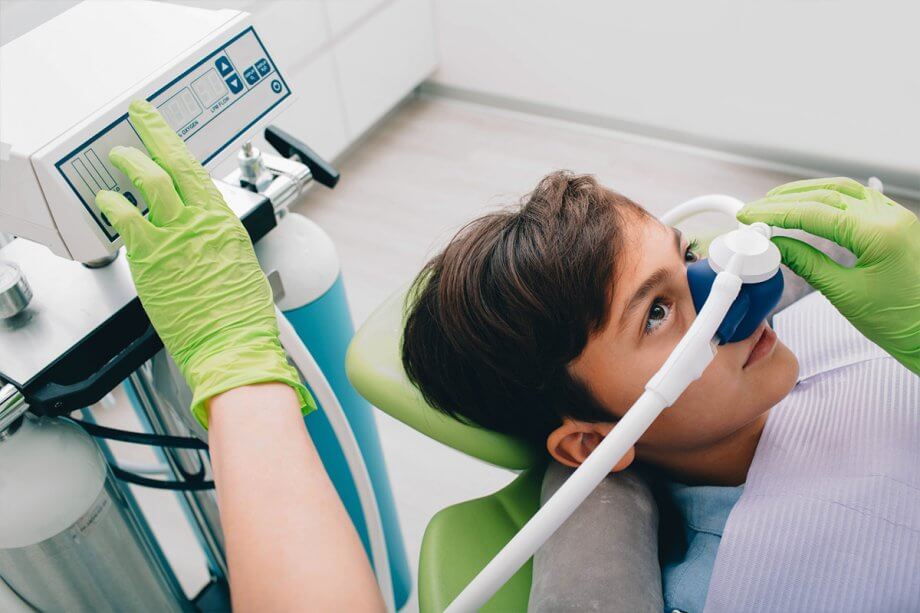While pediatric dentists work with anxious patients to calm their fears, parents frequently prefer sedation dentistry for their children. Sedation dentistry involves safely administering medications that help patients feel calm and relaxed during dental work.
Pediatric dentists use several levels of sedation to meet individual patient needs. Tender Smiles 4 Kids offers the following options:
Your pediatric dental practitioner can help you determine the most appropriate level of sedation for your child.
How Nitrous Oxide Works
Dentists have used nitrous oxide for anesthesia since the mid-nineteenth century. The patient receives the medication through a small mask placed over the nose. They breathe the clear, sweet-smelling gas, displacing a fraction of the body’s oxygen supply. The child remains able to control their bodily functions and breathe on their own.
The gas creates a calming sensation, sometimes producing mild euphoria. This effect is why nitrous oxide is sometimes known as “laughing gas.” Children may doze off during the procedure and may not remember it.
The most significant advantage of nitrous oxide is that it wears off quickly. After administering pure oxygen for a few minutes, the patient’s system is flushed of nitrous oxide, and the patient can rapidly return to normal activities. Patients generally do not experience lingering side effects like headaches and grogginess.
Understanding Conscious Oral Sedation
Appropriate doses of anti-anxiety and sedative medications help children relax through procedures. Most children will not remember the procedure but will wake up quickly.
About IV Sedation
IV sedation is a stronger form of anesthesia that allows a child to sleep through the procedure. Many adult patients receive IV sedation during wisdom tooth removal. A qualified anesthesia professional must be in the room during procedures to monitor the patient’s vital signs and recovery.
Hospital Dentistry and General Anesthesia
Your pediatric dentist may recommend general anesthesia if a child needs extensive work or has specific special needs. General anesthesia means that the child receives sedating medication that causes a loss of consciousness and lets them feel no pain. Since this type of sedation requires administration in the hospital, it includes many safeguards for the child’s health.
Frequently Asked Questions About Sedation Dentistry
Can you feel pain while sedated?
Nitrous oxide and other dental sedatives both relieve pain and help the patient relax. Even if the patient feels discomfort, it is unlikely to bother them. In the case of nitrous oxide, the dentist can adjust the gas ratio to provide a little more sedation.
Can my child go back to school after dental anesthesia?
It depends on what type of sedative or anesthetic your child had. With nitrous oxide, your child should fully recover within a few minutes and be able to return to school or play immediately. With conscious oral sedation and IV sedation, your child will need to rest quietly for the remainder of the day. For general anesthesia, the child should feel mostly back to normal on the second day.
Contact Tender Smiles 4 Kids
If your child worries a great deal about dental work or if you have a special-needs patient, sedation dentistry can help them receive the care they need without anxiety. Please contact us at one of our convenient Central Jersey offices to schedule a consultation today.

